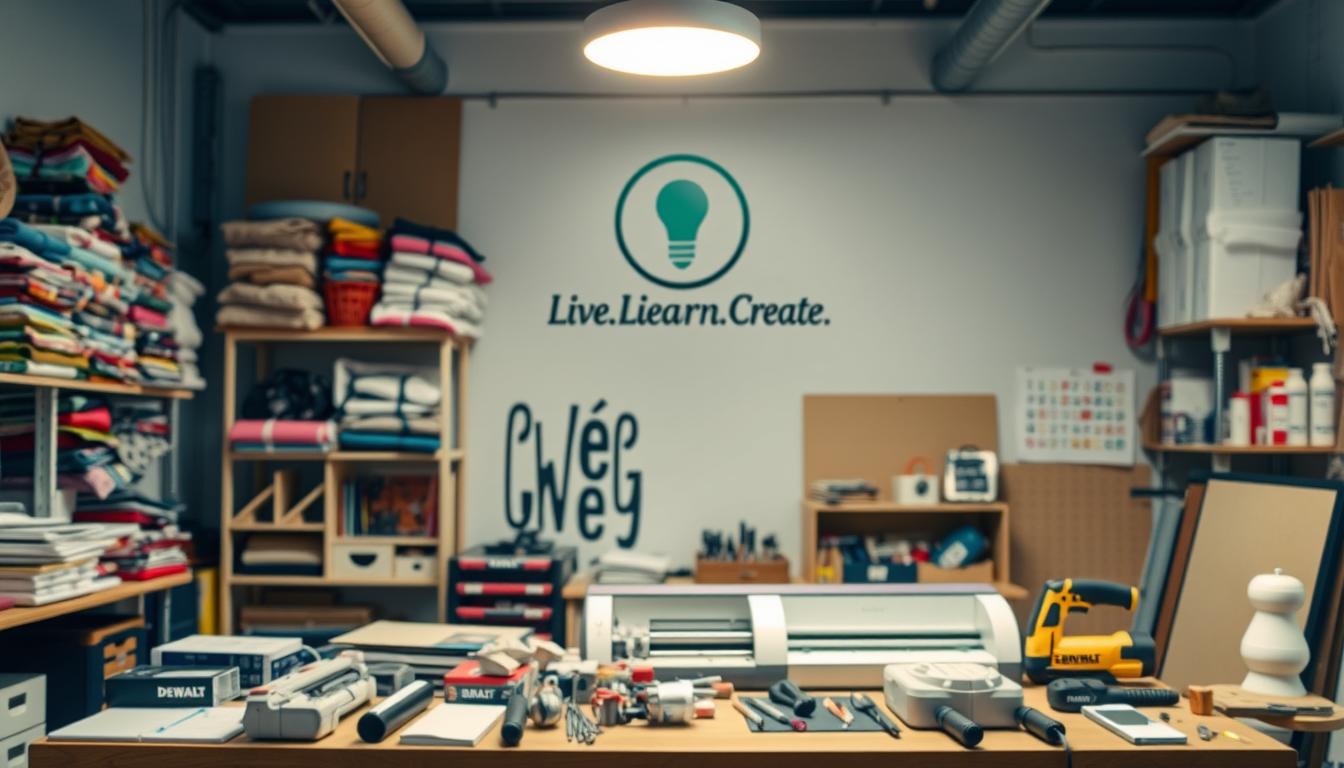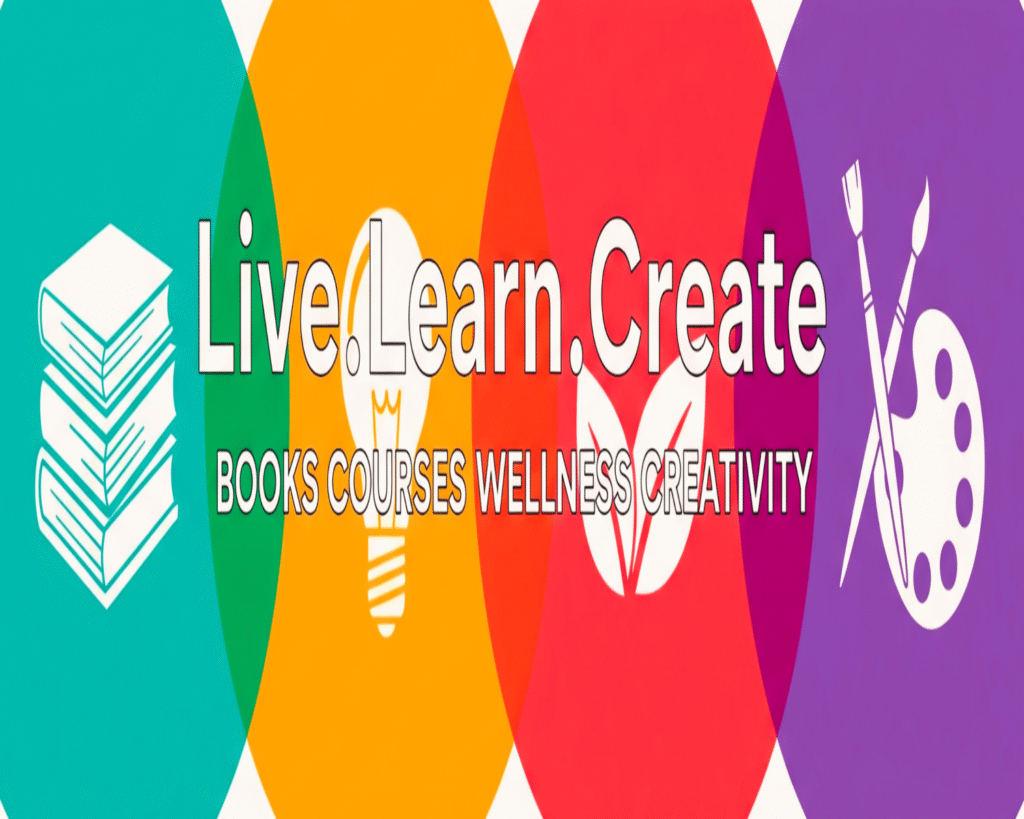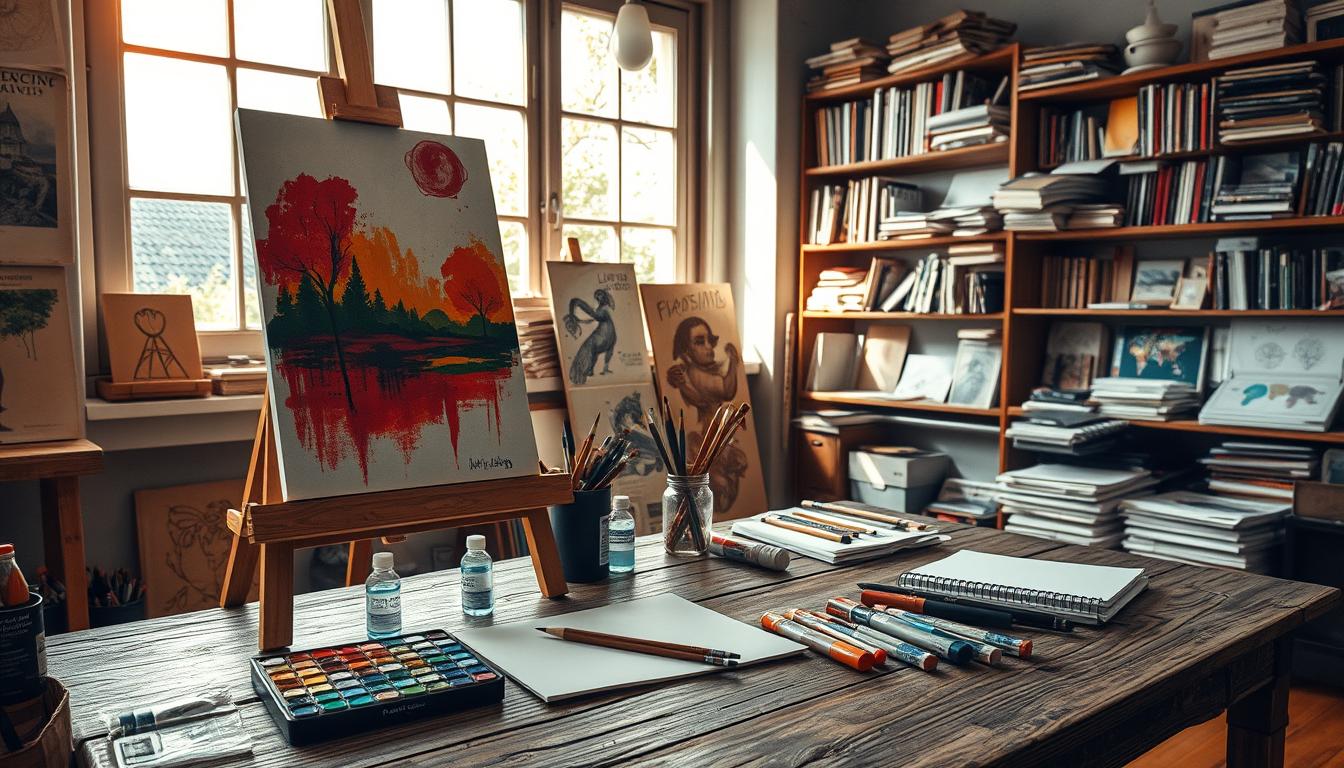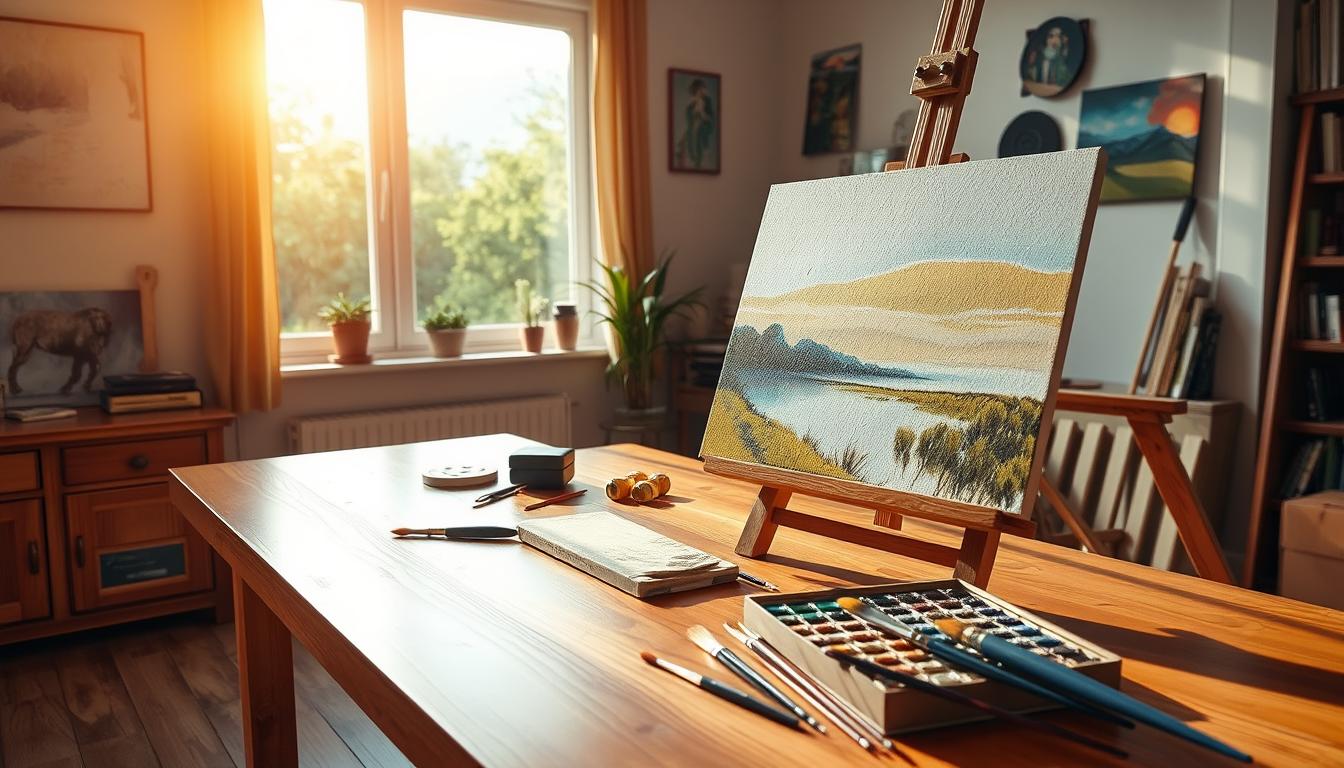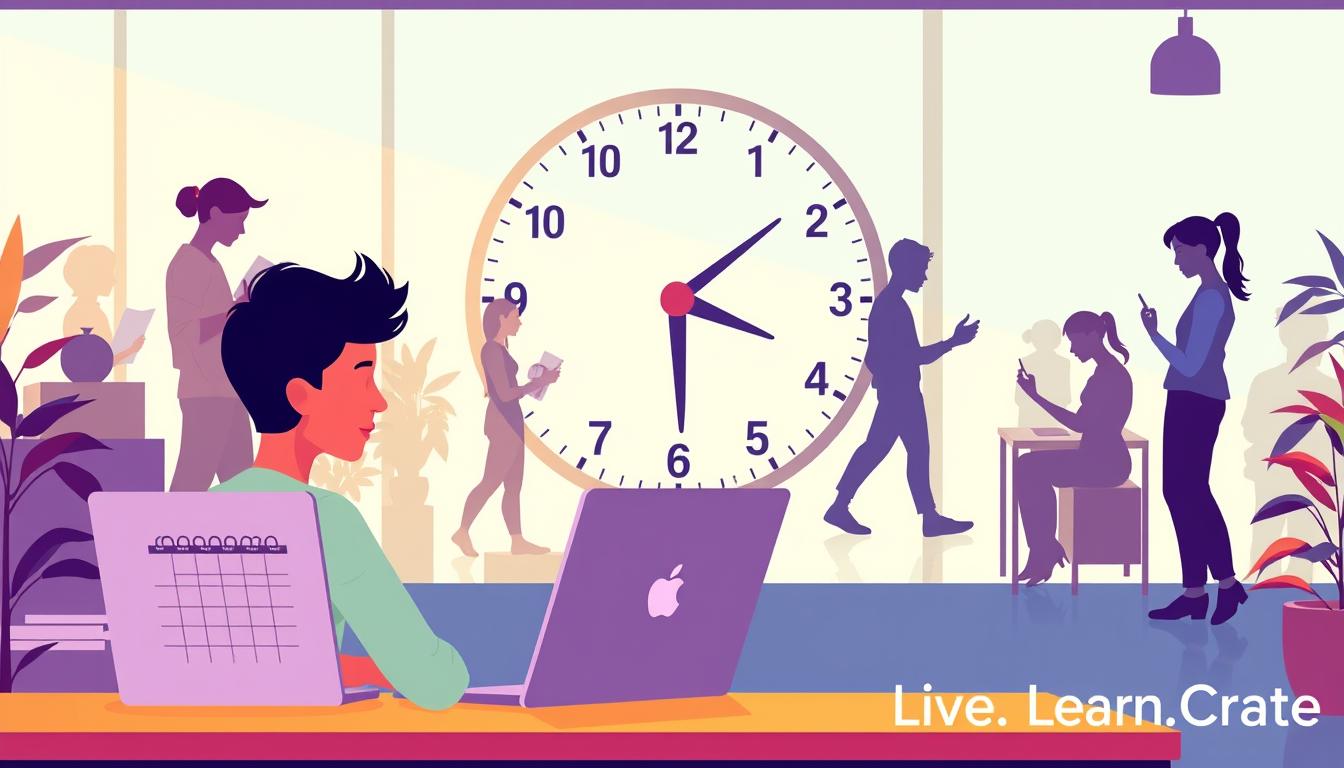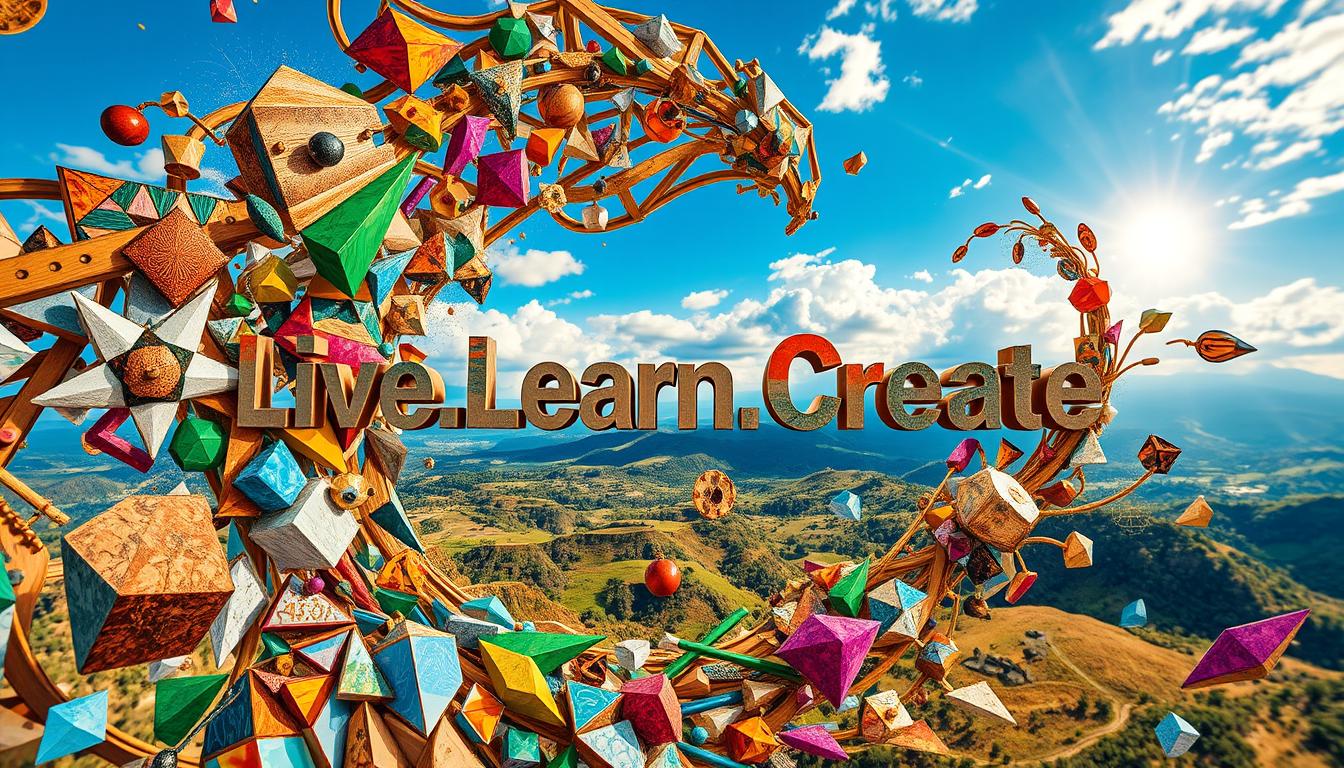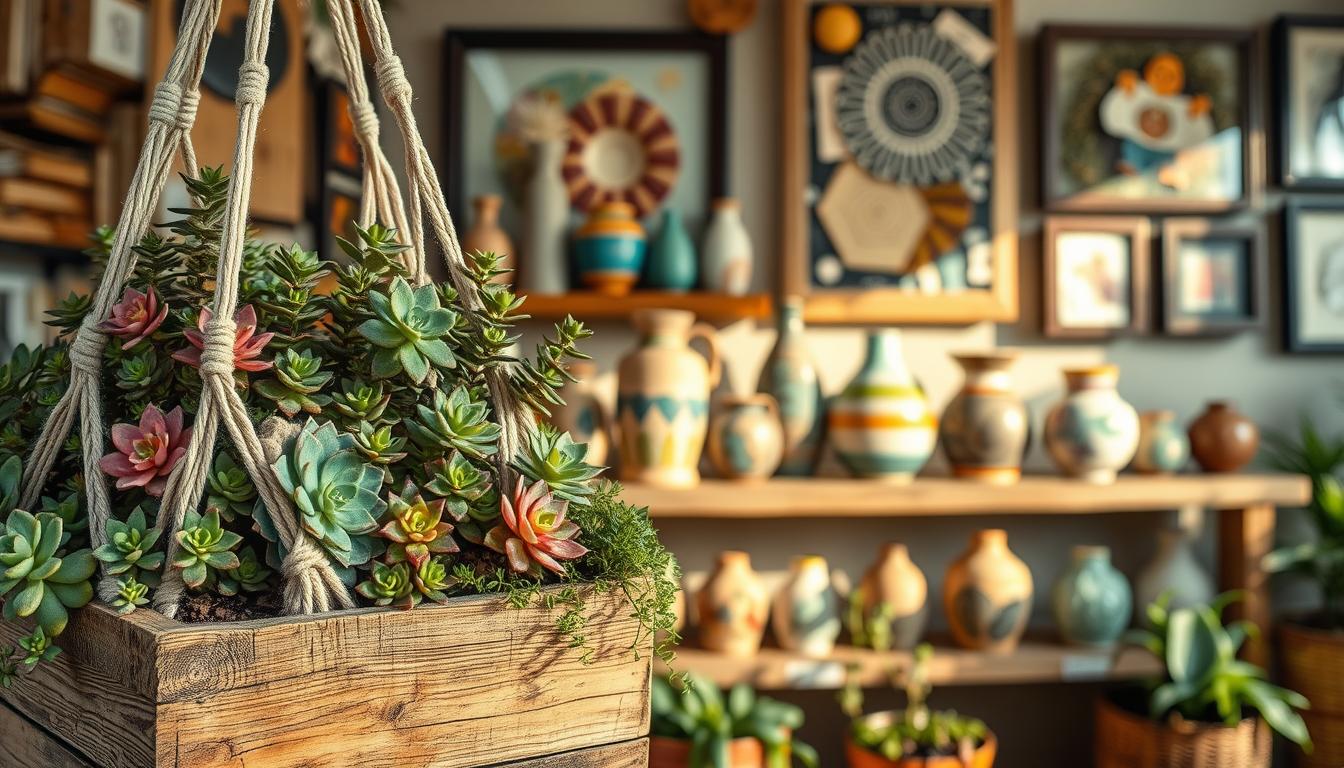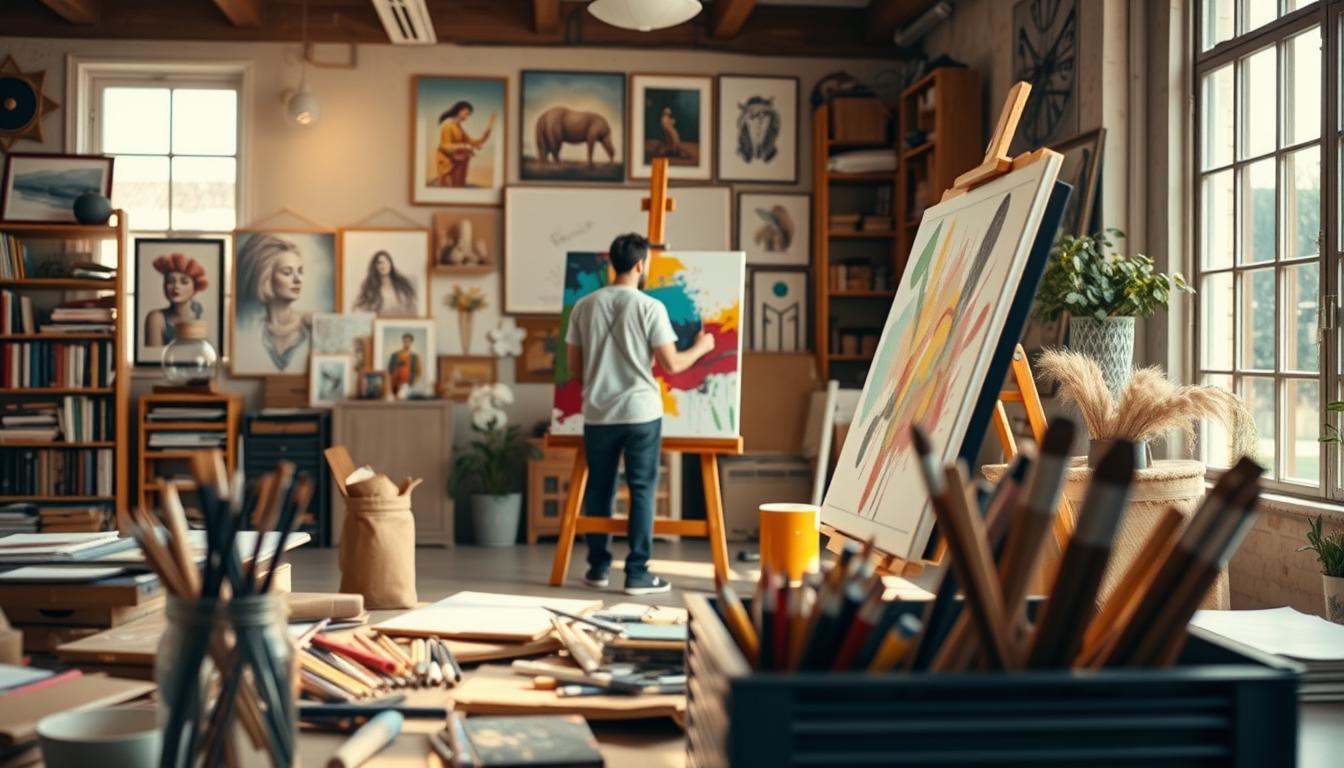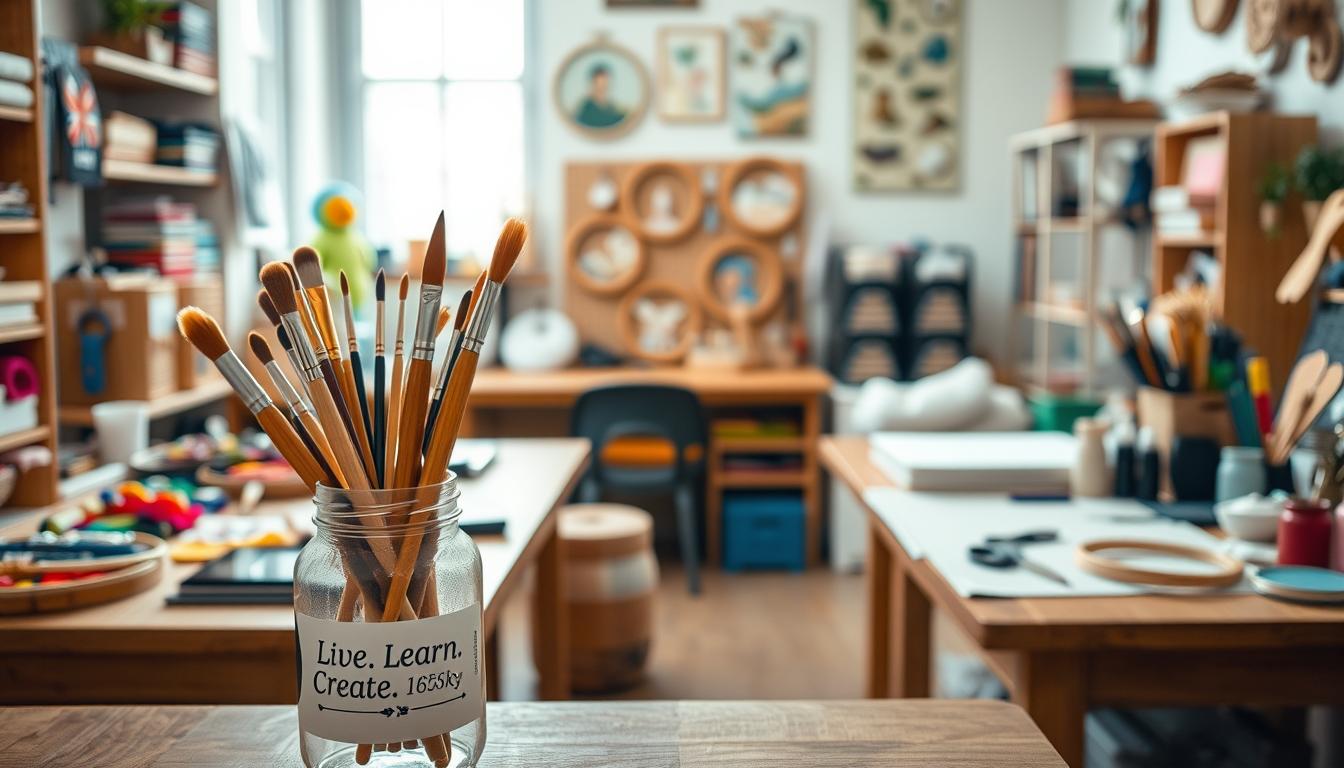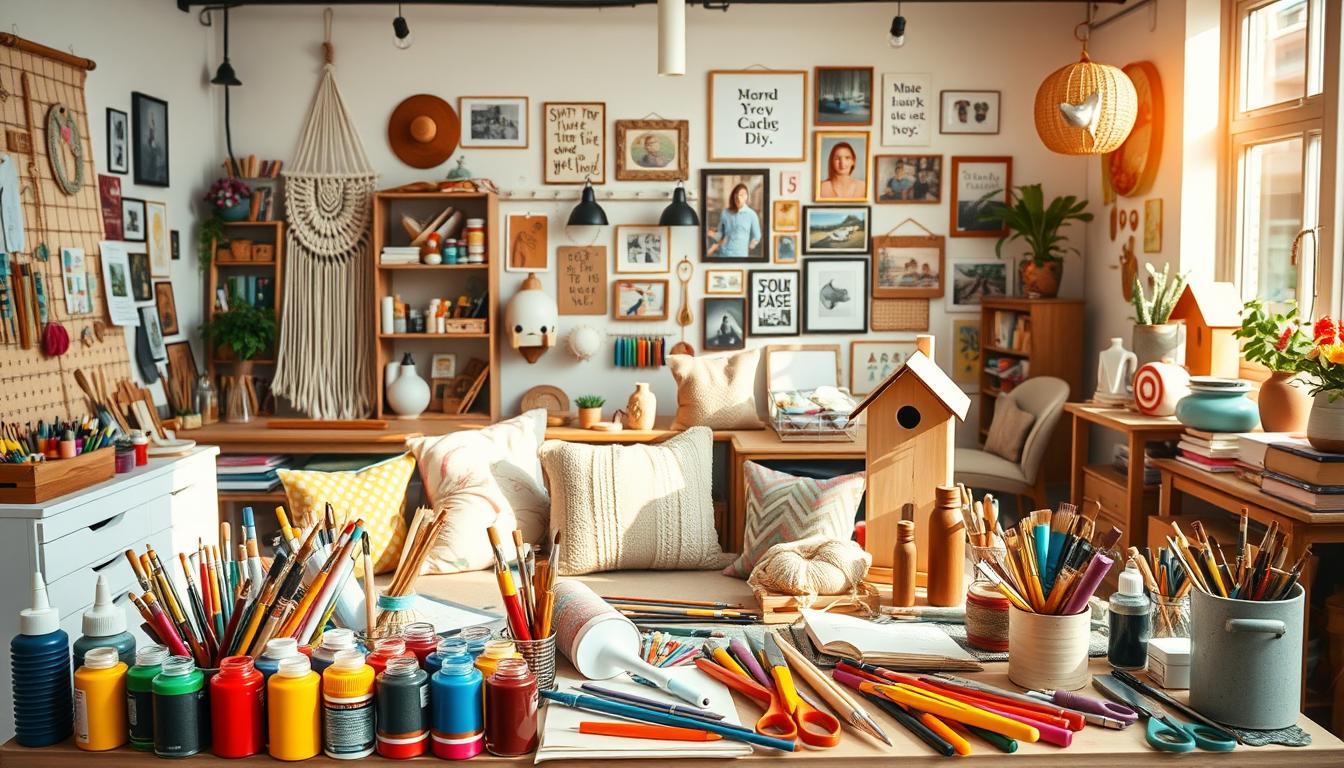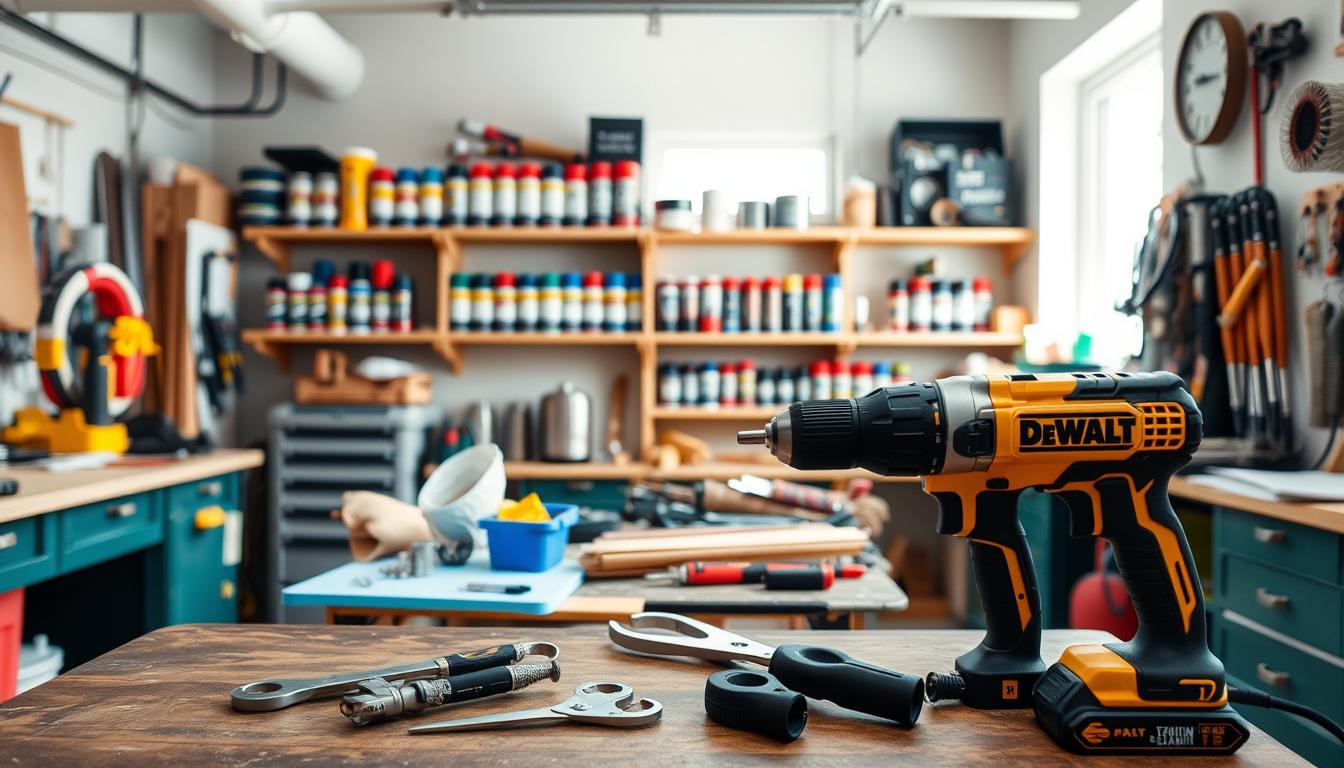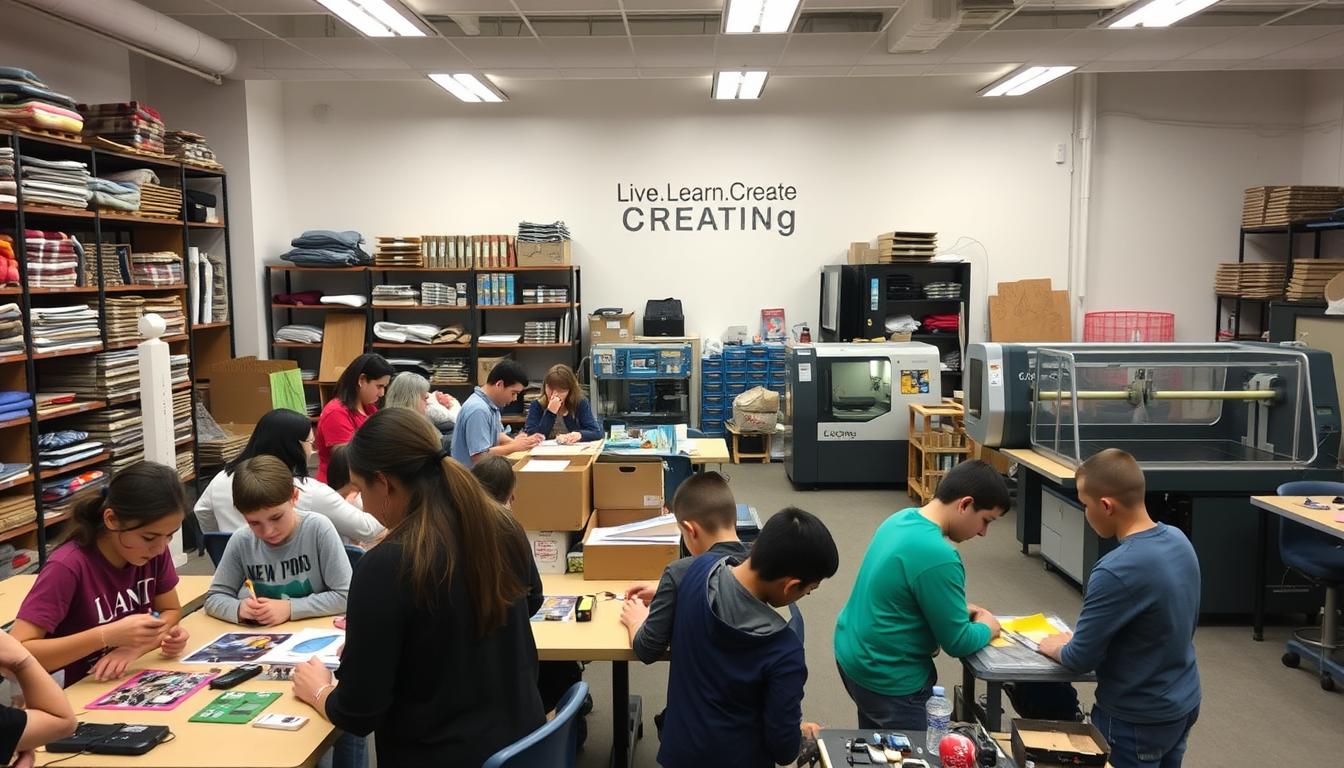Did you know the DIY movement has inspired a new generation of innovators and craftspeople worldwide? This phenomenon, known as Maker Culture, is changing how we think about creativity, technology, and making things.
Maker Culture is all about embracing a DIY ethos. It encourages people to design, build, and customize their own projects. It’s not just about making something with your hands. It’s about building a community that values craftsmanship and new ideas.
As we dive into Maker Culture, we’ll see how it’s changing our lives and shaping the future of innovation. For more insights, check out https://livelearncreate.blog/blog/ to learn more about this topic.
Key Takeaways
- Maker Culture is a global movement promoting DIY innovation and craftsmanship.
- It encourages individuals to design, build, and customize their projects.
- The movement fosters a community that values creativity and technology.
- Maker Culture is shaping the future of production and innovation.
- It’s about personal growth through hands-on creativity and problem-solving.
What is Maker Culture?
Maker Culture is all about a community-driven way of innovating and creating. It celebrates DIY ethics, open-source hardware, and working together on projects.
Definition and Origins
Maker Culture is a movement that focuses on creativity, innovation, and doing things yourself. The term “Maker” became well-known in 2005 with the start of Make: magazine. It became a key place for DIY fans and innovators to meet.
The roots of Maker Culture go back to the DIY movement. This movement has always encouraged people to take action themselves. It has grown, adding new technologies and teamwork over time.
Key Characteristics
Maker Culture stands out because of its strong community, teamwork, and creativity. Makers often work together, share their knowledge, and learn from each other.
| Characteristic | Description |
|---|---|
| Community-driven | Makers collaborate and share knowledge within a vibrant community. |
| DIY Ethics | Emphasis on self-sufficiency and hands-on experience. |
| Open-source Hardware | Sharing and modifying designs, promoting innovation and collaboration. |
Understanding these key traits helps us see how important Maker Culture is today.
The Rise of Makerspaces
Makerspaces are key in the maker world. They give people tools, resources, and help. These workshops change how we do DIY projects and innovate.
Overview of Makerspaces
Makerspaces are places where people share ideas and work on projects together. They have many tools, from simple crafting stuff to complex machines like 3D printers.
These spaces help people learn by doing. They can try new tech, get better at making things, and make their ideas real.
 and [Kobalt Laser Etcher](https://www.amazon.com/Kobalt-Laser-Etcher-Engraving-Machine/dp/B01LXCRMQE), crafting innovative projects. The middle ground bustles with [Creality Ender 3 V2 3D Printer](https://www.amazon.com/Creality-Ender-Printer-Resume-Printing/dp/B07XQJXZDW) stations, as makers breathe life into their digital designs. In the background, a lively community gathers around the [Cricut Maker 3 Cutting Machine](https://www.amazon.com/Cricut-Maker-Advanced-DIY-Machine/dp/B08HFPZ6YK), exchanging ideas and techniques under the Live.Learn.Create. banner. A vibrant, collaborative atmosphere where innovation thrives. A bustling makerspace filled with the hum of activity. In the foreground, a group of makers tinker with an array of [Dremel 4300 Rotary Tool Kit](https://www.amazon.com/Dremel-4300-5-40-Rotary-Tool/dp/B00BINMNYK) and [Kobalt Laser Etcher](https://www.amazon.com/Kobalt-Laser-Etcher-Engraving-Machine/dp/B01LXCRMQE), crafting innovative projects. The middle ground bustles with [Creality Ender 3 V2 3D Printer](https://www.amazon.com/Creality-Ender-Printer-Resume-Printing/dp/B07XQJXZDW) stations, as makers breathe life into their digital designs. In the background, a lively community gathers around the [Cricut Maker 3 Cutting Machine](https://www.amazon.com/Cricut-Maker-Advanced-DIY-Machine/dp/B08HFPZ6YK), exchanging ideas and techniques under the Live.Learn.Create. banner. A vibrant, collaborative atmosphere where innovation thrives.](https://livelearncreate.blog/wp-content/uploads/2025/08/A-bustling-makerspace-filled-with-the-hum-of-activity.-In-the-foreground-a-group-of-makers-1024x585.jpeg)
Benefits of Joining a Makerspace
Being part of a makerspace can really change your life. It helps you grow your inventive spirit. Here are some big benefits:
- Access to lots of tools and tech
- Chances to meet and work with others
- Learning and getting better at making things
- A community that supports being creative and innovative
Let’s see how makerspaces make a difference with some stats:
| Makerspace Benefits | Description | Impact |
|---|---|---|
| Access to Tools | Variety of equipment for projects | Enhanced creativity |
| Collaboration | Opportunities for networking | Innovative solutions |
| Skill Development | Workshops and training | Professional growth |
By joining a makerspace, you connect with a community that boosts your creativity and innovation.
Tools and Technologies in Maker Culture
At the heart of maker culture are many tools and technologies that spark innovation. The maker movement has grown thanks to digital fabrication like 3D printing and CNC machining. It also owes a lot to online platforms and social media.
Essential Tools for DIY Projects
Makers use a variety of tools to make their projects come to life. These include:
- 3D Printing Technology: Makes it easy to create complex prototypes and products.
- CNC Machining: Provides precise cutting and shaping of materials.
- Arduino and Raspberry Pi: These microcontrollers are key for many DIY electronics projects.
Chris Anderson, former editor-in-chief of Wired magazine, said, “The maker movement is a manufacturing revolution. It’s driven by the democratization of tools and technologies.” This change has let people turn their ideas into real things.
Emerging Technologies Shaping the Future
The future of maker culture is being shaped by new technologies. These include:
- Artificial Intelligence (AI): Adds AI to DIY projects for smarter, more interactive products.
- Internet of Things (IoT): Connects devices, enabling new interactions and automation.
- Advanced Materials: New materials offer better strength, durability, and sustainability.
As the maker movement grows, technology and craftsmanship will lead to new, groundbreaking projects. The open-source nature of many projects encourages a community that shares and works together on new ideas.
“The best way to predict the future is to invent it.” –
This idea is at the core of maker culture. It drives people to explore new possibilities through DIY innovation and craftsmanship.
Famous Maker Projects and Innovations
The maker movement has led to many innovative projects. These projects show the creative community’s inventive spirit. They highlight makers’ technical skills and their ability to think differently.
Notable Examples from the Maker Community
Some famous maker projects include 3D printing in art and DIY fashion. They also include open-source hardware like Arduino. These projects have expanded what’s possible and inspired others to be creative.
- 3D printing has made it possible to create detailed art pieces that were hard to make before.
- DIY fashion is growing, with makers designing and making their own clothes and accessories.
- Open-source hardware platforms like Arduino have made technology more accessible. This has let makers work on new projects.
 and a [Dremel 4000-6/50 Rotary Tool](https://www.amazon.com/Dremel-4000-6-50-High-Performance-Corded-Rotary/dp/B07V7DQCYC) take center stage, surrounded by an assortment of colored wires, circuit boards, and 3D-printed parts. In the middle ground, a [Cricut Maker 3 Cutting Machine](https://www.amazon.com/Cricut-Maker-3-Advanced-DIY/dp/B08YRCZRWL) and a [Raspberry Pi 4 Model B](https://www.amazon.com/Raspberry-Pi-Model-2019-Quad-Core/dp/B07TC2BK1X) hint at the technological aspect of the maker movement. The background features shelves stocked with a variety of craft supplies, tools, and the "Live.Learn.Create" brand logo, creating a vibrant, inspiring atmosphere for the DIY enthusiast. A well-lit, high-angle shot of a maker's workbench showcasing an array of DIY tools and projects. In the foreground, a [Weller WLC100 Soldering Station](https://www.amazon.com/Weller-WLC100-40-Watt-Soldering-Station/dp/B000AS28UC) and a [Dremel 4000-6/50 Rotary Tool](https://www.amazon.com/Dremel-4000-6-50-High-Performance-Corded-Rotary/dp/B07V7DQCYC) take center stage, surrounded by an assortment of colored wires, circuit boards, and 3D-printed parts. In the middle ground, a [Cricut Maker 3 Cutting Machine](https://www.amazon.com/Cricut-Maker-3-Advanced-DIY/dp/B08YRCZRWL) and a [Raspberry Pi 4 Model B](https://www.amazon.com/Raspberry-Pi-Model-2019-Quad-Core/dp/B07TC2BK1X) hint at the technological aspect of the maker movement. The background features shelves stocked with a variety of craft supplies, tools, and the "Live.Learn.Create" brand logo, creating a vibrant, inspiring atmosphere for the DIY enthusiast.](https://livelearncreate.blog/wp-content/uploads/2025/08/A-well-lit-high-angle-shot-of-a-makers-workbench-showcasing-an-array-of-DIY-tools-and-1024x585.jpeg)
Impact on Industries
The maker movement has had a big impact on different industries. For example, 3D printing in art has opened new ways for artists to express themselves. DIY fashion has also changed the fashion world by letting people make their own clothes.
| Industry | Impact | Examples |
|---|---|---|
| Art | New forms of creative expression | 3D printed sculptures, interactive installations |
| Fashion | Democratization of fashion design | DIY clothing, accessories, and footwear |
| Technology | Innovation through open-source hardware | Arduino, Raspberry Pi, and other platforms |
The maker movement keeps inspiring new ideas in many fields. It creates a culture of creativity and teamwork. As makers keep exploring new possibilities, we’ll see even more amazing projects.
The Role of Education in Maker Culture
Education is key in Maker Culture, helping people learn by doing. It’s clear that learning programs are vital. They help grow creativity, technical skills, and innovation in the Maker world.
Educational Programs and Workshops
Many makers teach others through workshops and courses. These programs are open to all, no matter their skill level or age. For example, Maker Faire, a big Maker event, has workshops and sessions led by experts.
Some top educational programs include:
- DIY electronics workshops
- Coding and robotics classes
- Woodworking and crafting sessions
- 3D printing and design workshops
These programs teach technical skills and encourage teamwork, problem-solving, and creativity. As Mitchel Resnick said, “The best way to learn is by making.”
“The maker movement is not just about making things; it’s about making people who can think, create, and innovate.”
Benefits of Hands-on Learning
Hands-on learning is central to Maker Culture. It brings many benefits, like better understanding of tech and developing critical thinking. By doing DIY projects, people can:
| Benefit | Description |
|---|---|
| Enhanced Understanding | Direct involvement in projects improves comprehension of complex concepts. |
| Critical Thinking | Hands-on activities promote problem-solving and analytical thinking. |
| Creativity | Experimentation and trial-and-error foster innovative thinking. |
The benefits of hands-on learning are wide-ranging. They make for a well-rounded education. By embracing Maker Culture, people gain valuable skills for both personal and professional life.
Community Involvement and Collaboration
The Maker culture is all about a vibrant community that works together, shares, and inspires. This community is what drives the innovation and creativity of the Maker movement.
Building a Network of Makers
Makerspaces and online platforms have created a global network of innovators, entrepreneurs, and creatives. This network is key for sharing ideas, knowledge, and resources.
Makerspaces are now places where people can gather, share tools, and work on projects. These spaces help people feel part of a community and encourage working together.
 and [Soldering Iron Kits](https://www.amazon.com/ANBES-Soldering-Iron-Kit/dp/B07J1YGVBH), their faces alight with the thrill of making. Amidst the buzz of activity, groups gather around [Raspberry Pi Starter Kits](https://www.amazon.com/CanaKit-Raspberry-Pi-Starter-Kit/dp/B08C5YRT36), exchanging ideas and techniques. In the middle ground, a [Live.Learn.Create] bulletin board showcases the community's latest projects and upcoming workshops. The background is a vibrant tapestry of repurposed materials, 3D-printed creations, and the warm glow of task lamps, reflecting the maker ethos of sustainability and innovation. A bustling maker space teeming with creativity and collaboration. In the foreground, enthusiasts tinker with an array of [Dremel Rotary Tool Kit](https://www.amazon.com/Dremel-4000-6-50-High-Performance-Rotary/dp/B07V8CY8FS) and [Soldering Iron Kits](https://www.amazon.com/ANBES-Soldering-Iron-Kit/dp/B07J1YGVBH), their faces alight with the thrill of making. Amidst the buzz of activity, groups gather around [Raspberry Pi Starter Kits](https://www.amazon.com/CanaKit-Raspberry-Pi-Starter-Kit/dp/B08C5YRT36), exchanging ideas and techniques. In the middle ground, a [Live.Learn.Create] bulletin board showcases the community's latest projects and upcoming workshops. The background is a vibrant tapestry of repurposed materials, 3D-printed creations, and the warm glow of task lamps, reflecting the maker ethos of sustainability and innovation.](https://livelearncreate.blog/wp-content/uploads/2025/08/A-bustling-maker-space-teeming-with-creativity-and-collaboration.-In-the-foreground-1024x585.jpeg)
Collaborating on Projects
Collaboration is a big part of the Maker culture. It lets people combine their skills and expertise to reach goals. Through open-source projects, makers can help and learn from bigger, community-driven projects.
| Benefits of Collaboration | Impact on Projects | Community Outcome |
|---|---|---|
| Sharing of knowledge and expertise | Enhanced project quality and innovation | Stronger, more supportive community |
| Pooling of resources | Faster project development | Increased diversity of projects |
| Mutual support and feedback | Improved problem-solving | Greater sense of belonging |
By teaming up, makers can do more than they could alone. This drives the Maker movement forward and inspires others to join in.
Maker Culture and Sustainability
The maker movement is more than just making new things. It’s about living more sustainably. Makers use their DIY skills to cut down waste and help the environment.
Eco-Friendly Practices in DIY
Makers are full of inventive spirit and know how to use old materials in new ways. They’re making a difference by being green. They use recycled stuff, cut down on waste, and make products that last.
The focus on craftsmanship in the maker world encourages fixing things instead of throwing them away. This change is key to lessening the harm of consumer culture on our planet.
Innovations for a Sustainable Future
The maker culture is leading the way to a greener future. Makers are working on new materials and energy-saving products. They’re at the heart of making things better for our planet.
- Designing products for recyclability and reuse
- Creating energy-efficient solutions for homes and businesses
- Developing sustainable materials for construction and crafting
Makers are making our world a greener place. They’re building a community that values creativity, being resourceful, and the DIY ethos.
Challenges Facing Maker Culture
Maker Culture is growing fast, but it faces many challenges. It’s important to tackle these issues to make sure everyone can join in. This ensures that making is open to all.
Common Barriers for New Makers
Newcomers to Maker Culture often hit roadblocks. These include:
- Limited access to tools and resources
- Lack of training and education opportunities
- High costs associated with DIY projects
- Insufficient mentorship and guidance
The maker community is working hard to solve these problems. Many makerspaces now offer tools and equipment at low or no cost. This helps new makers get started.
Addressing Inclusivity and Accessibility
Inclusivity and accessibility are key for Maker Culture to thrive. Efforts to increase diversity include:
- Creating welcoming environments in makerspaces
- Developing programs tailored to underrepresented groups
- Encouraging collaboration and knowledge-sharing
By being more inclusive, Maker Culture can keep growing and innovating. Makers from different backgrounds bring new ideas and perspectives. This drives progress.
. Warm, focused lighting illuminates the hands-on projects and prototypes taking shape. In the foreground, a tinkerer carefully assembles a custom electronic device, brow furrowed in concentration. Across the space, a team collaborates on a large-scale fabrication, exchanging ideas and techniques. The background reveals shelves of raw materials, spare parts, and inspiring maker community zines. This scene captures the challenges of Maker Culture - the need for access to specialized equipment, the iterative process of problem-solving, and the importance of shared knowledge and support. A bustling maker's workshop, filled with the tools of DIY innovation - 3D printers, laser cutters, and a workbench stocked with [Live.Learn.Create Maker Tools Set](https://www.amazon.com/gp/product/B07MXVLWC4). Warm, focused lighting illuminates the hands-on projects and prototypes taking shape. In the foreground, a tinkerer carefully assembles a custom electronic device, brow furrowed in concentration. Across the space, a team collaborates on a large-scale fabrication, exchanging ideas and techniques. The background reveals shelves of raw materials, spare parts, and inspiring maker community zines. This scene captures the challenges of Maker Culture - the need for access to specialized equipment, the iterative process of problem-solving, and the importance of shared knowledge and support.](https://livelearncreate.blog/wp-content/uploads/2025/08/A-bustling-makers-workshop-filled-with-the-tools-of-DIY-innovation-3D-printers-laser-1024x585.jpeg)
The Maker Culture community is tackling its challenges head-on. By working together, makers can keep innovating and exploring new possibilities.
The Future of Maker Culture
The future of Maker Culture looks bright. New trends and technologies will change the DIY world. The Maker movement will keep shaping industries and building creative communities.
Trends Shaping the Future
Several trends will shape Maker Culture’s future. These include digital fabrication, growing online communities, and more focus on sustainability.
- Digital Fabrication: 3D printing and CNC machining are getting easier to use. This lets makers create complex projects with less effort.
- Online Communities: More online forums and social media groups are connecting makers globally. This helps with collaboration and sharing knowledge.
- Sustainability: Makers are now focusing on eco-friendly projects. They’re finding new ways to reduce waste and promote sustainability.
Getting Involved
Want to join Maker Culture? Start by checking out local makerspaces and online communities. This will help you meet other makers.
| Resource | Description | Benefits |
|---|---|---|
| Makerspaces | Community-operated workshops with tools and equipment. | Great for collaboration, learning, and working on projects. |
| Online Forums | Websites and social media groups for Maker Culture discussions. | Connect with a global community, share knowledge, and network. |
| Workshops and Courses | Programs teaching Maker Culture skills. | Learn through hands-on projects, develop skills, and gain experience. |
Joining Maker Culture means you’re part of a community that’s changing the world. You can help by joining makerspaces, online groups, or learning new skills. There are many ways to contribute and benefit from the Maker movement.
Resources for Aspiring Makers
Starting your maker journey? The right resources can really help. The DIY ethos is about being creative and skilled. There are many online places and groups that offer great support.
Online Communities
Online forums and maker networks are great places to meet others who love DIY. These groups share tips, resources, and ideas. They help you keep up with the latest in Makerspace activities.
Recommended Tools and Books
Getting the right tools and resources is key to making your projects real. Whether you’re into woodworking or electronics, there are many books and tutorials out there. With these and the creativity of maker culture, you can reach your full potential.
FAQ
What is Maker Culture, and how does it relate to the DIY ethos?
Maker Culture is a movement that encourages people to make their own things. It’s all about DIY, where you design, build, and customize your projects. It promotes learning by doing, innovation, and building a community.
What are makerspaces, and what benefits do they offer to makers?
Makerspaces are community workspaces that offer tools and resources. They let makers work together, share knowledge, and learn new skills. This helps drive innovation and creativity.
What tools and technologies are commonly used in Maker Culture?
Makers use many tools and technologies. This includes 3D printers, laser cutters, and DIY electronics. They also explore new tech like AI, robotics, and IoT.
How does Maker Culture promote sustainability and eco-friendliness?
Maker Culture encourages makers to reuse and recycle materials. This reduces waste and promotes eco-friendly practices. It also inspires makers to find innovative solutions for environmental issues.
What role does education play in Maker Culture?
Education is key in Maker Culture. Many programs and workshops focus on hands-on learning and skill development. They help makers gain the skills and knowledge needed to succeed.
How can I get involved in Maker Culture, and what resources are available to me?
To join Maker Culture, you can join online communities and attend makerspace events. There are many resources available, like tutorials, books, and tools, to help you start.
What are some common barriers for new makers, and how can they be addressed?
New makers often face barriers like lack of experience and limited access to tools. These can be overcome by finding online communities, joining makerspaces, and taking part in workshops and tutorials.
How does Maker Culture promote community involvement and collaboration?
Maker Culture fosters community involvement by encouraging makers to share knowledge and resources. Makers work together on projects and participate in online forums and makerspace events.
What is the future of Maker Culture, and how will it continue to evolve?
The future of Maker Culture will be shaped by new trends and technologies. Advances in AI, robotics, and IoT will likely drive innovation and creativity. Makers will continue to make positive changes in their communities.
Transform your home into a more peaceful and mindful sanctuary. Creating a Zen-inspired home environment is a core part of the “Live.Learn.Create” theme, focusing on peace, mindfulness, and a clutter-free space. Here is a curated list of Zen home items.
The Zen Essentials
These items are the building blocks of a calm, intentional living space.
- Candles & Scents:
- Scented Candles: Look for calming, natural scents like sandalwood, lavender, white tea, or bergamot. Choose candles made with soy or beeswax for a clean burn.
- Essential Oil Diffusers: A minimalist, sleek diffuser made of bamboo, ceramic, or glass.
- Essential Oil Sets: Look for blends specifically for relaxation, focus, or sleep.
- Incense & Burners: Natural incense sticks (e.g., palo santo, sage) with a simple, elegant burner.
The Zen Decor
This is about incorporating natural elements and simple design.
- Natural Materials:
- Wood or Bamboo Trays: For organizing candles, stones, or other small items.
- Ceramic Vases: Simple, unglazed ceramic vases in neutral colors like white, beige, or gray.
- Minimalist Art: Simple line drawings, abstract prints, or nature-inspired artwork.
- Hand-Carved Stone Coasters: Or other small stone sculptures.
- Textiles:
- Linen or Cotton Throws: A soft, neutral-colored throw blanket to add warmth.
- Jute or Sisal Rugs: These add natural texture and grounding to a space.
- Meditation Cushions (Zafu) & Mats (Zabuton): These provide comfort for meditation and add a serene touch to a room.
The Zen Ambiance
These items help create a peaceful sensory experience.
- Lighting:
- Himalayan Salt Lamps: These provide a warm, soft glow.
- Japanese-style Paper Lanterns: For a soft, diffused light source.
- Dimmable Smart Bulbs: To easily control the warmth and brightness of your lighting.
- Sound:
- Tabletop Water Fountains: The gentle sound of running water is incredibly calming.
- Wind Chimes: Made from natural materials like bamboo or metal for a soft sound.
- Bluetooth Speakers: Small, aesthetically pleasing speakers for playing ambient or meditation music.
- Nature:
- Bonsai Trees or Air Plants: Low-maintenance indoor plants that bring life and a touch of nature indoors.
- Zen Gardens: A small, tabletop sand garden with a rake and stones for a meditative ritual.
- Decorative Rocks & Pebbles: For bowls or as a decorative element.
Best Sellers https://amzn.to/3Vet1tI
New Releases https://amzn.to/4mwLjTi
Amazon Movers & Shakers https://amzn.to/4fPsZlP
Mindfulness Coloring Books https://amzn.to/4fQ0wMx
Personal Growth Coloring Books https://amzn.to/4lJeRf0
Health & Wellness https://amzn.to/4oRt24C
Zen Home Decor https://amzn.to/3VeA3i6
Zen Garden Decor https://amzn.to/4mXjT8D
Zen Garden https://amzn.to/3HQTVVB
- Mindfulness & Meditation:
- Physical Wellness:
- Habit & Productivity Tools:
- Books:
- Best-selling personal development books (Mindset, The 7 Habits of Highly Effective People, The Subtle Art of Not Giving a F*ck)
- Books on a variety of skills (coding, photography, writing.)
- Educational Gadgets:
- Smart pens that digitize notes (e.g., Rocketbook)
- Portable scanners for digitizing documents
- Laptops, tablets, and accessories
Create (Creativity, Innovation, Projects)
These products cater to your creative side, whether you are a artists, writer, or DIY enthusiasts.
- Creative Supplies:
- Adult coloring books or “paint-by-sticker” books
- Craft kits (e.g., candle-making, pottery, embroidery)
- Digital Creation Tools:
- General Inspiration & Making:

